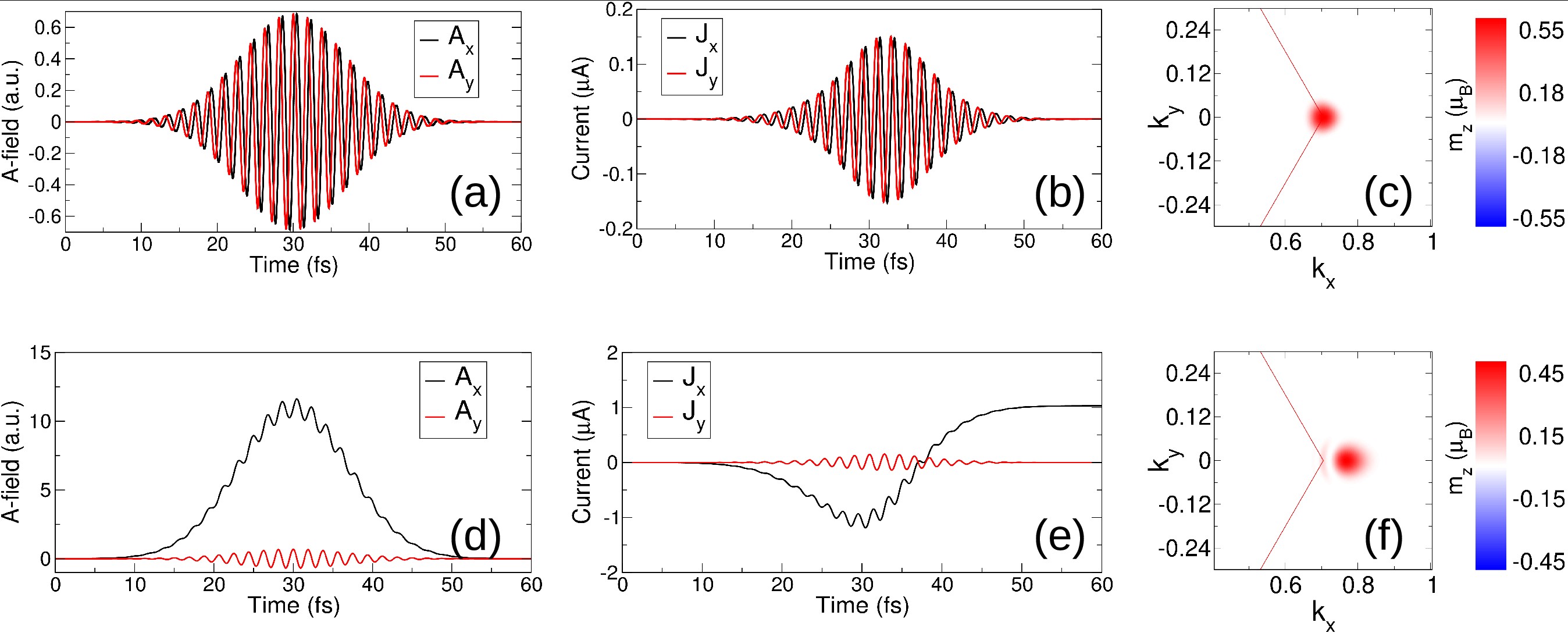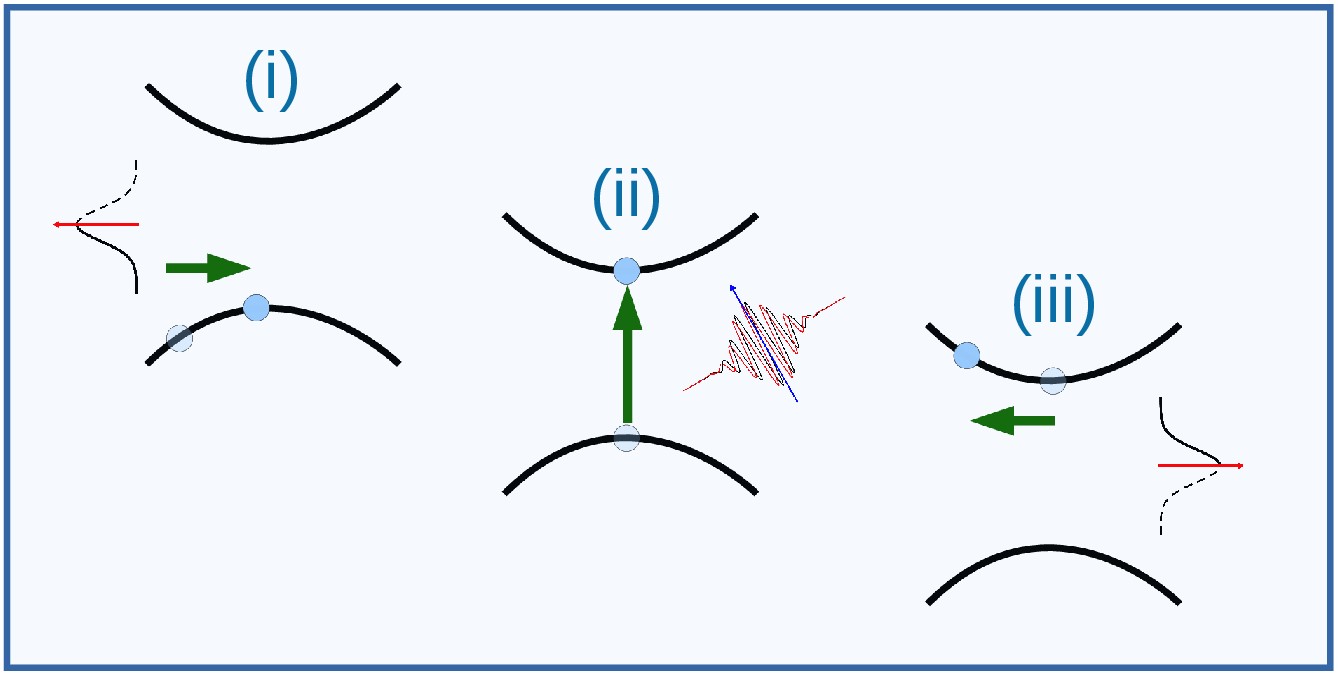| Apr 13, 2023 |
Hybrid laser pulses enable ultrafast control of spin and valley currents
(Nanowerk News) The flow of matter, from large-scale water currents to the microscopic flow of electric charge, is fundamental to the infrastructure of modern society. Scientists are constantly seeking ways to control quantum aspects of matter, such as electron spin and valley states, in order to make breakthroughs in energy efficiency, data storage capacity, and processing speed.
|
|
Researchers at the Max Born Institute in Berlin have recently discovered a method for inducing and controlling the flow of spin and valley currents in ultrafast timeframes using specially designed laser pulses. This discovery offers a fresh perspective on the search for the next generation of information technologies.
|
|
Ultrafast laser control over the basic quantum properties of matter is a critical challenge that must be addressed to develop future information technologies beyond the semiconductor electronics that define our current era. Electron spin and valley index, an emergent property of two-dimensional materials related to quasiparticle momentum, are two promising quantum properties in this regard. Both spintronics and valleytronics offer many potential advantages over classical electronics in terms of data manipulation speed and energy efficiency.
|
|
While spin excitations suffer from a dynamic loss of character due to spin-orbit-induced spin precession, the valley wavefunction represents a more stable "data bit" that is only threatened by intervalley scattering, a feature controllable by sample quality. Valleytronics thus presents a potentially robust platform for moving beyond classical electronics.
|
 |
| Circularly polarized laser pulse (a-c) versus a hencomb laser pulse (d-f). The vector potential of a circularly polarized lightwave applied to the two dimensional material Tungsten Diselenide generates no residual current after the laser pulse (a,b), solely exciting a valley charge state, (c), in which the Bloch velocities of all excited states cancel by virtue of the charge excitation being positioned at the valley centre (the apex of the Brillouin zone indicated by the red lines). In contrast a hencomb pulse, in which the circularly polarized lightwave is augmented by a symmetry breaking linearly polarized THz component generates a pronounced residual current (d,e), which results as the symmetry breaking shifts the excited charge off the valley centre (f), leading to non-cancellation of current over the excited charge distribution. While the THz pulse by itself leads to no excitation, in combination with circularly polarized light the THz polarization vector and amplitude are the key parameters that fully control the final current state. (Image: FVB)
|
|
Creating and controlling valley and spin currents will be essential to any future valleytronics or spintronics technologies, in addition to quantum excitations encoding data bits. Although significant attention has been given to tailoring light forms on ultrafast time scales to selectively excite valley quasiparticles, the precise creation and control of valley currents and spin currents – critical for any future valleytronics technology – has remained beyond the scope of ultrafast light control.
|
|
In a study published in Science Advances ("THz induced giant spin and valley currents"), researchers from the Max Born Institute in Berlin demonstrated how a hybrid laser pulse combining two polarization types enables complete control over ultrafast laser-light-induced currents.
|
|
Controlling the charge state with circularly polarized light is well-established, stemming from the spin-valley locking of transition metal dichalcogenides, which results from the valley-selective response to circularly polarized light. However, circularly polarized light does not create a valley current, as the Bloch velocities cancel out and there is no net valley current. To achieve full control over light-induced valley currents, both their magnitude and direction, researchers must move beyond the spin-valley locking paradigm of circularly polarized light.
|
 |
| Schematic illustration of the action of hencomb pulse: (i) a half cycle of THz light drives an intraband motion sending states distant from the gap edge to the gap edge; (ii) the optical component excites states across the gap; (iii) finally the second half cycle of THz light returns the state to its original momentum. The overall action of the hencomb pulse is thus to excite charge at a finite valley momentum determined by the THz pulse polarization vector. (Image: FVB)
|
|
Creating a valley-excited state that does result in a net valley and spin current involves breaking the local valley degeneracy. The most effective way to accomplish this is through a linearly polarized single-cycle pulse with a duration comparable to that of the circularly polarized pulse, which falls within the "THz window" of 1 THz to 50 THz. The researchers demonstrated that the resulting light form generates a substantial residual current due to a non-cancellation of the Bloch velocities of the excited quasi-momentum.
|
|
The physical process underlying this pulse is illustrated in three stages: a half-cycle of the THz component of the pulse drives intraband motion, sending states away from the gap edge to the gap edge; the circularly polarized component then excites this charge across the gap; finally, the second half-cycle of the THz component returns the charge to its original momentum. The polarization vector of the THz light component is the key control parameter of the pulses, with the polarization direction and amplitude determining the direction and amplitude of the light-induced current. In this manner, these pulses offer a new route toward ultrafast valleytronics and spintronics by providing direct light control over both the charge and current states of valley-active two-dimensional materials.
|


